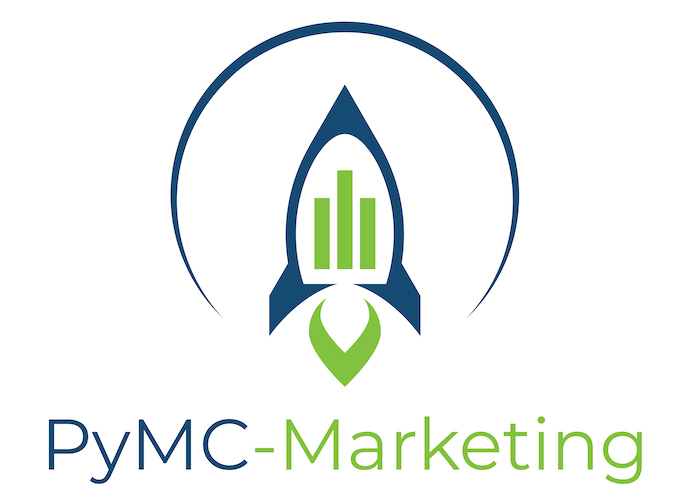Introduction to Customer Lifetime Value#
For a variety of reasons, companies often need to quantify the monetary value of each customer (present and future) and do so while acknowledging the entire relationship the customer has with the company. This value represents the maximum the company should spend on acquiring new customers. It may also guide customer retention efforts and inform financial forecasting.
A simplistic approach to calculating customer value might be to calculate how much value (e.g., revenue, profit) was derived from former customers and assume that future customers will yield similar value. Unfortunately, this and other intuitive approaches treat all customers as equivalent and fail to accurately characterize the nature of the relationshiop: this approach will not distinguish between a customer that makes large, infrequent purchases and a customer that makes small, frequent purchases.
Fortunately, with Bayesian modeling, we can do better than this! Customer Lifetime Value (CLV) models can estimate various aspects of each customer’s relationship with the company, project these estimates into the future for forecasting purposes, and quantify the value of the customer over the entire lifetime (past and future). These estimates can then be utilized for marketing and financial purposes.
What can you do with a Customer Lifetime Value model?#
Customer lifetime value models provide rich insights and are used in many ways, but here are some of the highlights:
Evaluate customer acquisition costs. The value of a customer over the entire lifetime represents an absolute maximum amount a company should be willing to spend to acquire a customer.
Guide marketing campaigns. Knowing what kinds of customers are most (and least) valuable provides a strong basis for selecting customers (e.g., segments) to target with future marketing campaigns. It also provides guidance about how much to spend when targeting specific types of customers.
Guide retention and reacquisition efforts. Estimates of current customers’ future value can be used to automate aspects of the company’s customer relationship management system. High-value customers can be prioritized. Retention campaigns can target customers at risk of churning (terminating their relationship with the company). Reacquisition campaigns can target high-value customers who have already churned.
Avoid being misled by other factors. Without a broad, all encompassing way of valuing customers, companies may focus on KPIs that provide incomplete picture. For example, companies may focus on the total number of customers acquired without realizing that many are low-value. Or companies may focus on the average revenue generated by a customer, without a good way of building forecasts of future behavior.
Validate your understanding through predictions. We gain confidence in our knowledge of the world by making predictions and comparing them to what happens. CLV models generate forecasts that can be checked against reality. As a result, we can improve our understanding and modeling iteratively to become more accurate over time.
How does a Customer Lifetime Value model work?#
Customer lifetime value models come in two basic varieties: contractual and non-contractual. When customer relationships are contractual (e.g., subscription-based), the CLV modeling tends to be a bit more straightforward because the company always knows the status of the customer relationship (i.e., the relationship is ongoing or has been terminated). When the relationship is non-contractual, the status of the relationship is always uncertain.
In either case, CLV models incorporate two main components: a model of revenue and a model of the lifetime.
Modeling revenue#
The revenue model characterizes the rate at which individual customers “buy” (i.e., generate transactions) and the magnitude of those purchases. Typically, we can think about of an individual customer making purchases at a relatively steady rate (e.g., once per month). Of course, the actual timing of purchases will vary somewhat and we will be more confident about the rates associated with customers who have purchased many times in the past. The same is true of the magnitude of purchases. Our estimates of frequency and magnitude allow us to characterize how many purchases to expect from a customer in the future and how large those purchases will be. Together, this allows us to quantify the revenue expected from a customer if the relationship continued into the future.
Modeling lifetimes#
Unfortunately, not all customer relationships last forever. The second component allows us to model the expected duration of the customer relationship. With contractual relationships, customers may voluntarily churn at the end of contract periods (e.g., deciding not to renew a subscription) and CLV models estimate the probability with which a given customer does or does not do so. With non-contractual customer relationships, things are trickier. If a customer tends to make a purchase once per month and hasn’t done so for 6 weeks, should we assume the customer has churned? Or perhaps this is just part of the typical variability in this customer’s behavior. Either way, CLV models permit us to evaluate the probability that a given customer will continue to be a customer at some given time in the future and the total lifetime of each customer.
By combining the purchasing behavior of each customer with the expected period over which such purchases will be made, we arrive at an estimate of the total revenue expected from each customer.
Putting it all together#
To see how all these different components come together, you can review the CLV Quickstart or one of specific CLV models available within PyMC-Marketing.
